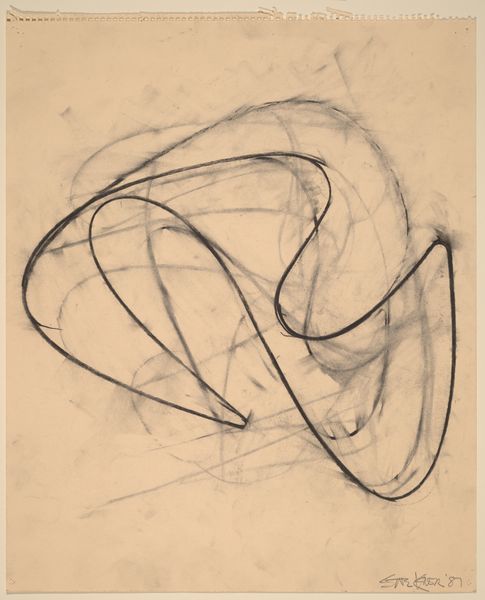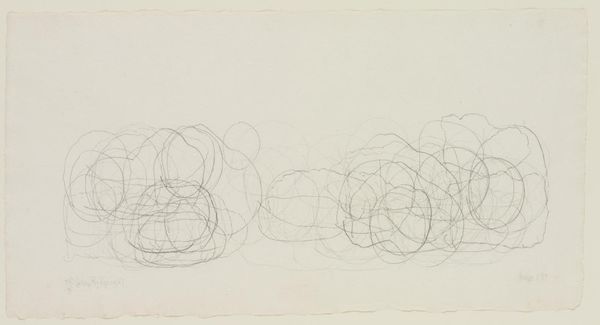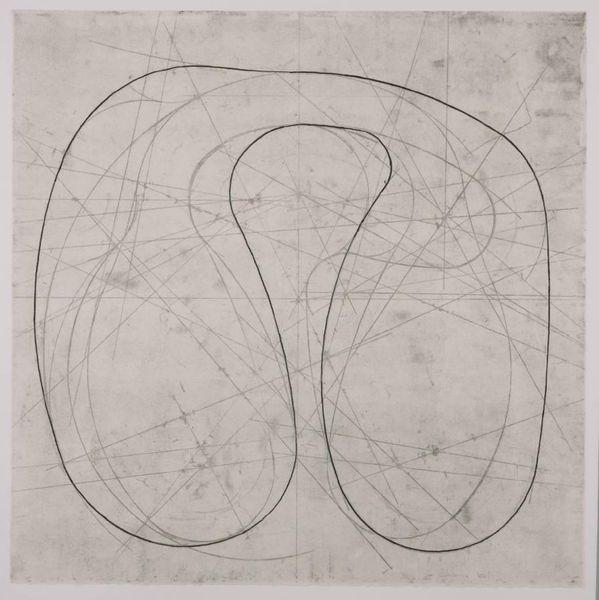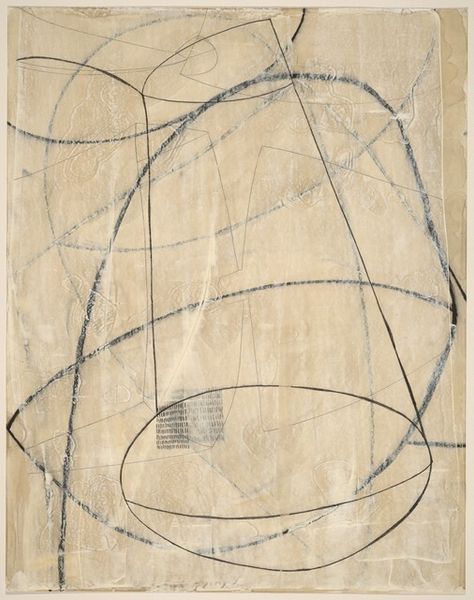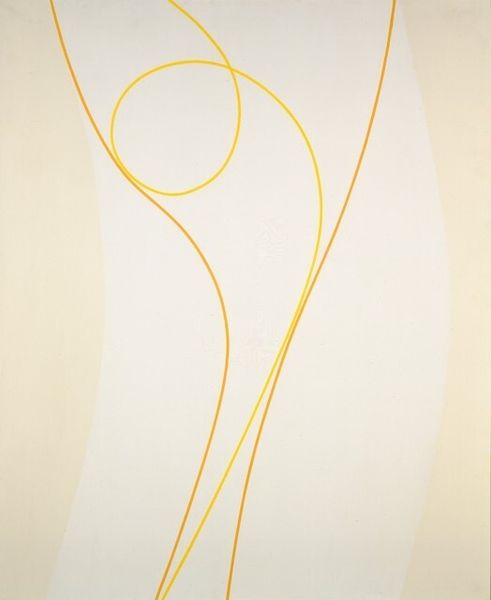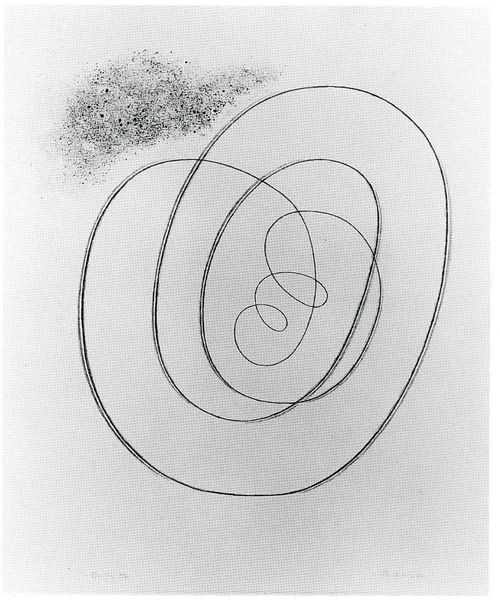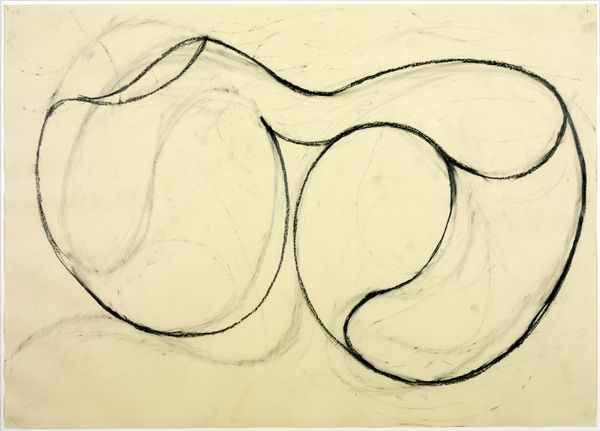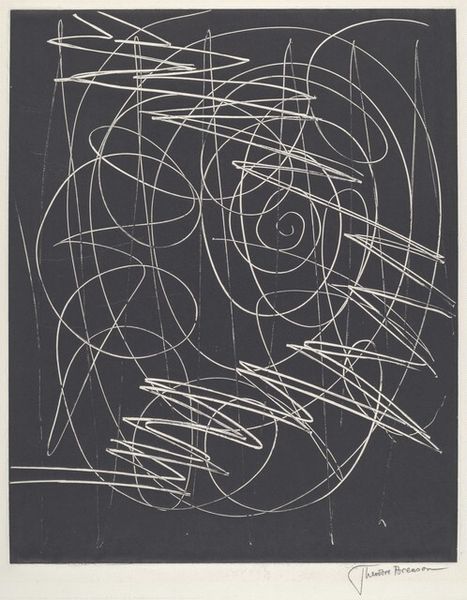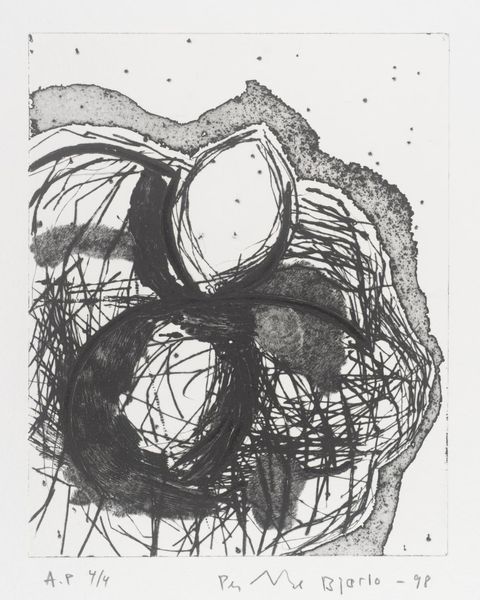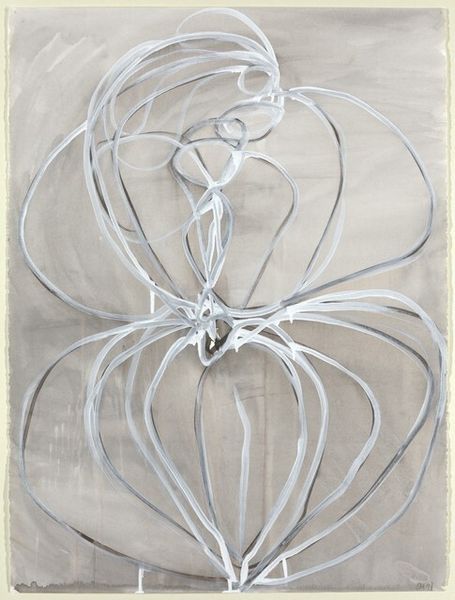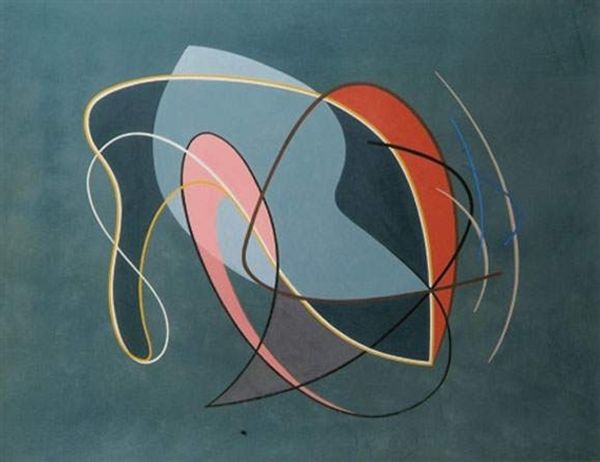
drawing, graphite
#
drawing
#
geometric
#
abstraction
#
line
#
graphite
Copyright: Richard Deacon,Fair Use
Editor: This drawing, titled "It's Orpheus When There's Singing #7," was made in 1979 by Richard Deacon. It looks to be graphite on paper, with lots of geometric shapes intertwined. It's… intriguing, almost like a deconstructed architectural plan. What strikes you when you look at this piece? Curator: Well, aren’t those tangled lines just magnificent? They remind me of a bird’s nest, but one built by a very meticulous, perhaps slightly mad, mathematician. The way Deacon layers the graphite, building up these translucent planes, feels incredibly spatial despite being on a flat surface. It's like he's trying to capture the echo of a form rather than the form itself. Do you get a sense of movement in there, or does it feel static to you? Editor: I do see movement, almost like something's trying to break free. It’s interesting you mention an echo because it also gives off a sense of reverberation, like sound waves visualized. Does the title influence how you see it? I mean, Orpheus and singing… Curator: Absolutely. Orpheus, the musician whose voice could charm even the stones! Maybe this isn't just about geometry; perhaps it’s an attempt to depict the invisible structures that music creates. It’s the under-drawing of a song, wouldn’t you say? Or maybe even the diagram of an emotion – yearning, maybe. It's the singing made visible... or at least, the scaffolding that supports the singing. Editor: Wow, that gives me a whole new perspective. Seeing it as a diagram of emotion makes it so much more powerful than just abstract shapes. Curator: Exactly! And that's the magic of art, isn’t it? It offers us a blueprint for feelings, drawn with the language of lines and curves. Editor: I will never look at geometric abstraction the same way again.
Comments
No comments
Be the first to comment and join the conversation on the ultimate creative platform.
